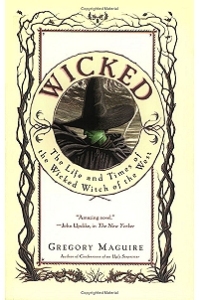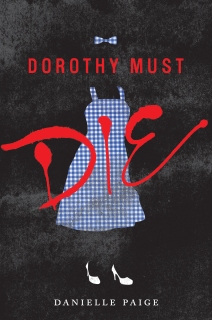The Night Circus by Eren Morgenstern is a critically acclaimed young adult fiction novel featuring two illusionists who were marked as opponents from a young age by their famous magicians of fathers. In a twist of events, the two fall in love prior to learning of their destiny and are unable to find it in their hearts to signify one another’s downfall. Having to deal with both the expectations and tribulations of not only their fathers, but also their mentors and their fellow circus performers, aforementioned lovers Celia and Marco find themselves in the midst of the unexpected- as can be expected with the enigmatic night circus, Le Cirque des Rêves. While the two lovers are the main focus of the story, Morgenstern gives great insight into her other characters’ lives, as all features in The Night Circus are intertwined in one way or another. This unique writing style introduces readers to the most primary secondary character, Bailey the farm boy, who falls into internal conflict when he is given the option of abandoning his mundane life on the farm to travel with the circus, seduced by the uncertainty of the future through his two relatively new friends, Poppet and Widget.
Morgenstern’s book is geared more towards young adults and adults in general. Speaking specifically, The Night Circus would appeal more to whimsical readers or those looking for a mentally engaging and mysterious read. The book describes the magic and illusions in depth while at the same time leaving many elements to the reader’s mind, so there must be a degree of willful suspension of disbelief and active imagination for those who do not habitually believe in magic. The magic Morgenstern writes about is parallel to the relationships her characters have with one another. Considering all of the book’s characters are tied to the circus, Morgenstern’s purpose of writing The Night Circus was to serve readers a glimpse of how the circus serves a darker purpose than its gilded entertainment scene, but to also to create a parallel to relate this to everyday life. In the daily walks of life, there is more than meets the eye. Morgenstern encourages readers to consider what they cannot see by setting the unknown elements of life parallel to Le Cirque des Rêves and through this, achieves her purpose. Having read this book, I will go into my day viewing everything as a little bit more of a puzzle.
The most prominent stylistic choice Erin Morgenstern incorporated in her book was an omniscient narrator focused on individual plots and subplots. By doing this, Morgenstern allowed readers time to contemplate how one character’s decision could affect one of another plot, which tied the stories together quite nicely. There were also small interludes throughout the book in which the circus appearance would be reflected on or the reader would be directly addressed. At the very beginning of the book it is written, “Then the iron gates shudder and unlock… Now the circus is open. Now you may enter” (5). Throughout the whole book, the narrator told the story through cryptic language and open-ended sentences. In no way did this detract from perception or full understanding of what was occurring, but enhanced both the severity of the whimsical and enigmatic tone set in juxtaposition to the heavy burden of specific characters. For example, the last moments of Tara Burgess happened near a train, after a meeting with one Mr. A.H. The whole exchange was odd, as Tara could not recall why she was in the train station, what more why she was there. After being deposited by A.H. on the train platform, Tara stepped forward and was killed by the train. Morgenstern, instead of saying Tara was hit by a train, simply stated, “She does not see the train” (179). The writing style demands rapt attention and at the same time provides the perfect style for just that. Prominent themes present in The Night Circus are change and escape. Bailey’s story exemplifies change and escape, as well as unmet expectations in how he is encouraged to determine which life-altering path he will take in less than one day. Discontent with his farm life, Bailey found his escape in the Le Cirque des Rêves when it was in his town. When he broke in on a dare, he ended up meeting the girl who would become his best friend, Poppet. When Bailey finally found
Poppet at the circus again, he was introduced to her twin brother Widget and the three became inseparable. However, their tight friendship was jeopardized when Poppet visited Bailey on the farm and told him he would have to decide by nighttime to travel with the circus or stay on his farm. As a fifteen or sixteen year old, this would be a drastic and life changing decision, but also the teenage dream of escape. As if leaving his family would not be enough, Poppet told him “I know that if you don’t come with us, there won’t be anymore circus” (268). This quote is the embodiment of stress, but also the catalyst of Bailey’s life. It also signifies the pace of Morgenstern’s writing. A multitude of issues are solved and created within a few pages. The fast pace of the action is offset by the tame and descriptive descriptions of the subplots. Through a mix of emotional and logical prose, the author hooks her readers into her book, as if the circus and its performers are unfolding before their eyes.
This book greatly appealed to my interest in the arts of magic and illusion, even though circuses frighten me. The advanced language and sophisticated writing style were extremely pleasing and restored my hope in today’s authors. The complexity of Morgenstern’s characters is unparalleled and they are written to be very in touch with their emotions. In addition to this, all of the interactions between the characters seem to hold an agreement of keeping a secret from the reader. The only thing I did not like about the text was that at some points the events would be confusing in the moment, but thankfully they would be explained later on. From me, The Night Circus receives a solid 8.5/10 stars, as I feel this read will stick with me for months to come. The best books are the ones you cannot forget, and I will not forget this one anytime soon.
Morgenstern took the saying “everything is not what it seems” and constructed an entire universe from it. With The Night Circus, she not only reinstates what is already known, but she encourages readers to contemplate the world around them and to question reality, which many people are afraid to do. This fearless and indirect call to action will touch the hearts of readers and influence a change in worldly perception.



